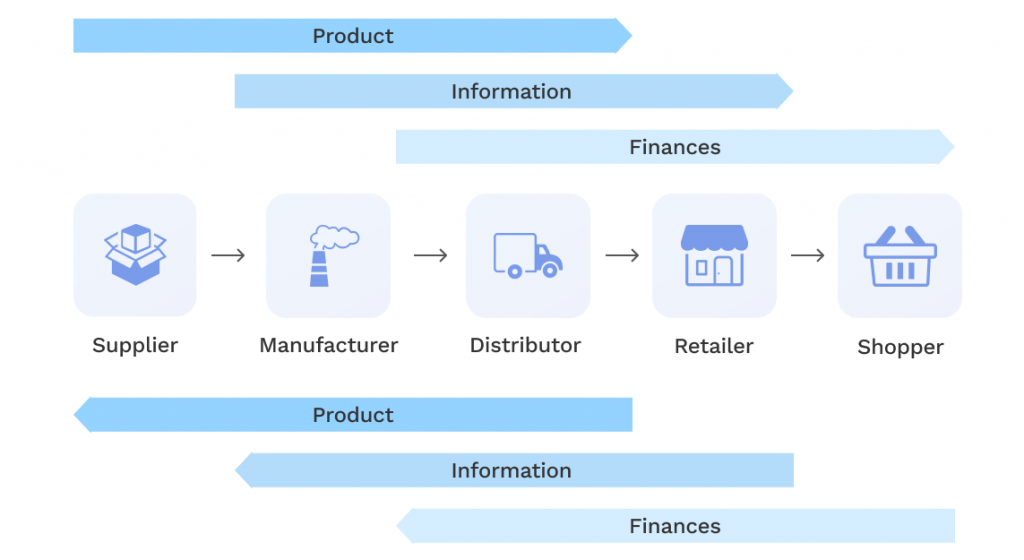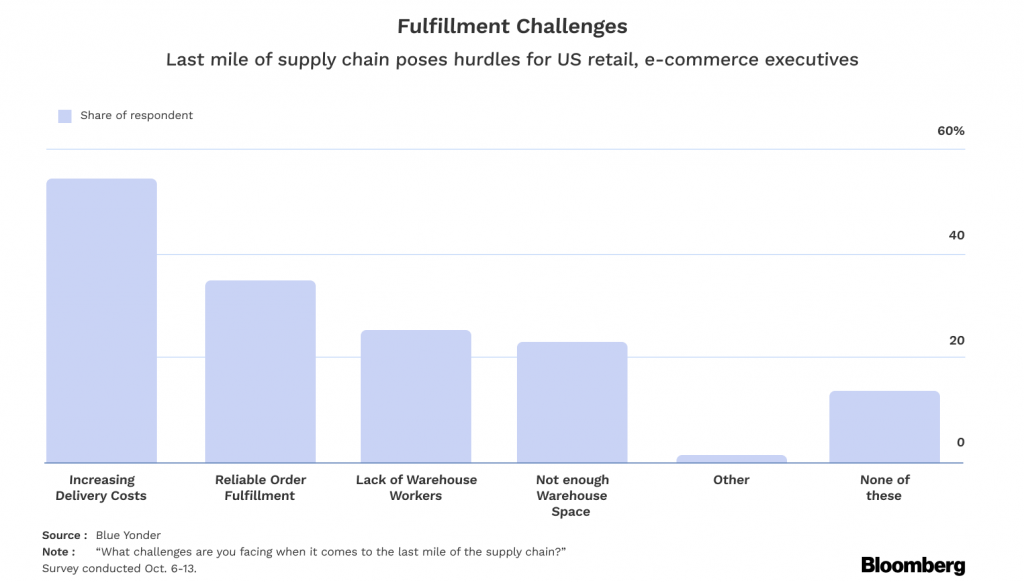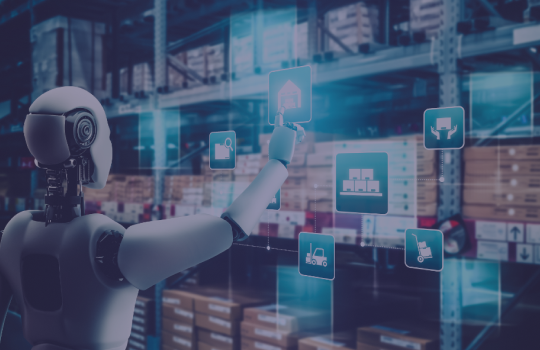What Does the Retail Supply Chain Look Like in 2023?
What Does the Retail Supply Chain Look Like in 2023?
In 2023, amid worldwide conflicts, rising inflation, and the existential threat of climate change, retailers face a very down-to-earth problem: getting their products into the hands of consumers.
The retail supply chain is deeply affected by these global events, but there are steps businesses can take to thrive in such changing times.
In this article, we’ll discuss the state of the retail supply chain in 2023, some of the new challenges facing retailers and etailers, and how smart retailers can overcome these challenges with profit optimization software from Hypersonix.
Key Takeaways:
- The retail supply chain is experiencing significant challenges in 2023.
- Adapting to shifting consumer behavior and geopolitical tensions is paramount for maintaining a robust retail supply chain in 2023.
- Hypersonix’s ProfitGPT can help your business combat disruptions to the retail supply chain in 2023 and beyond.
Retail Supply Chain: Overview and Status Quo
The retail supply chain, an interconnected group of activities, facilitates the transfer of goods from suppliers to consumers. The supply chain includes sourcing, transportation, manufacturing, storage, and distribution—from raw material extraction to its arrival at the doorstep of the consumer.

The Rise of eCommerce
Before 2023, the retail supply chain has already undergone significant challenges and changes. Most significantly, technology has upended the retail supply chain status quo.
Partly driven by the COVID-19 pandemic and shifting consumer behavior, eCommerce has increasingly become the preferred way for consumers to shop.
That means retailers had to quickly adapt, becoming more agile and flexible, and integrate new technologies into their supply chain.
For example, data analytics has emerged as an important tool, enabling retailers to use high-quality data to better predict future needs, price products strategically, and foster novel consumer relationships.
Focus on Sustainability
Since the retail supply chain involves transportation, processing, and warehousing, carbon emissions are a significant consideration for retailers. In fact, retailers account for around 25% of all global emissions, a fact that consumers are increasingly savvy about.
Rising environmental awareness has made consumers more mindful of the ecological impact of their purchase decisions. In addition to the existential threat of climate change, retailers should also consider consumer attitudes toward sustainable practices.
Besides practices like green packaging and energy-efficient transportation, optimization is more important for retailers than ever. Smart inventory management tools, demand forecasting, and lean production methods can help retailers reduce their environmental impact and save money at the same time.
The 5 Biggest Supply Chain Challenges in 2023 (And How to Beat Them)
The last few years have seen major disruptions to the retail supply chain: from transportation shortages brought about by COVID-19 to the disruption caused by the Ever Given’s week-long stint in the Suez Canal. Adding to these recent upheavals, 2023 heralds some new trends of its own:
1. Inflation
Global inflation ravaged the retail world in 2021 and 2022. While some experts think that inflation has peaked, others are less optimistic. Amid this unsure future, retailers and their customers face a decrease in purchasing power.
A strong U.S. dollar favors cheap imports, but dwindling purchasing power poses a big challenge for the retail supply chain. As consumers have less money to spend, the retail supply chain also has less money to deliver goods and services.
To combat inflation, the retail supply chain can turn to lean production methods, smart inventory management, and dynamic pricing strategies. Now, more than ever, efficiency is important for the retail supply chain as it fights back against shrinking margins due to inflation.

2. Geopolitical Tension and Material Access
Global tensions such as Russia’s invasion of Ukraine, China’s aggression toward Taiwan, and the strained U.S.-China relationship, all contribute to difficulty for retailers both domestically and internationally.
These geopolitical tensions not only affect consumer attitudes toward the outputs of various countries but also impact material access, a significant part of the retail supply chain. If retailers can’t access raw materials, they might have no products to sell, making material accessibility a major concern for retailers in 2023.
To insulate your business against geopolitical tension and material shortages, consider establishing relationships with alternate suppliers now, rather than waiting for crises to occur.
While there is little you can do to shift the direction of global events, you can protect yourself against geopolitical tension by diversifying your retail supply chain.
3. Last-Mile Delivery Challenges
While freight shipping has its own challenges, including rising freight prices and shipping delays, last-mile delivery is especially important for the retail supply chain in 2023.
Last-mile delivery is the transportation of products from a fulfillment center (or retailer) to the end consumer. While last-mile delivery is a small part of the overall retail supply chain process, usually only lasting a few days, it can also be the most expensive due in part to its expedited nature.
As delivery costs continue to rise in 2023, retailers must grapple with either passing those costs on to the end buyers or absorbing those costs into their own margins.

4. Changing Consumer Behavior
Years after the end of COVID-19 lockdowns, its effects on consumers still linger in 2023.
In 2020, online delivery had a massive boost as many buyers replaced in-person spending with online transactions. Long after physical stores reopened, many consumers found that they preferred delivery over in-person shopping.
What that means for the retail supply chain in 2023 is that many companies that found themselves unexpectedly shifting to online delivery models in 2020 are now suffering growing pains as delivery continues to thrive. In particular, many retailers are struggling with inventory management, fulfillment, and ecommerce infrastructure.
Adopting AI-powered digital tools can change how businesses approach data. It allows you to optimize inventory levels (saving on warehousing costs) and optimize eCommerce pricing strategies which are both important for staying competitive amid changing consumer behavior.
5. Intelligent Pricing
Consumer behavior isn’t the only thing compelling retailers to rethink their pricing strategies. In 2023, retailers have access to new tools for intelligent pricing, including AI-powered software for profit optimization and advanced data analytics.
Intelligent pricing can include dynamic pricing strategies, personalized pricing, and competitor price tracking. In 2023, profit optimization software can wrap all those functions into one platform.
Next Steps with Hypersonix
As the retail world grows more intelligent, the retail supply chain has to respond intelligently. That’s why AI tools for data analytics and pricing intelligence are vital for retailers.
Hypersonix is putting those tools in the hands of ecommerce and retail companies through our ProfitGPT profit optimization platform.
To see how Hypersonix can help you navigate the challenges of 2023 and beyond, request a personalized demo today!





